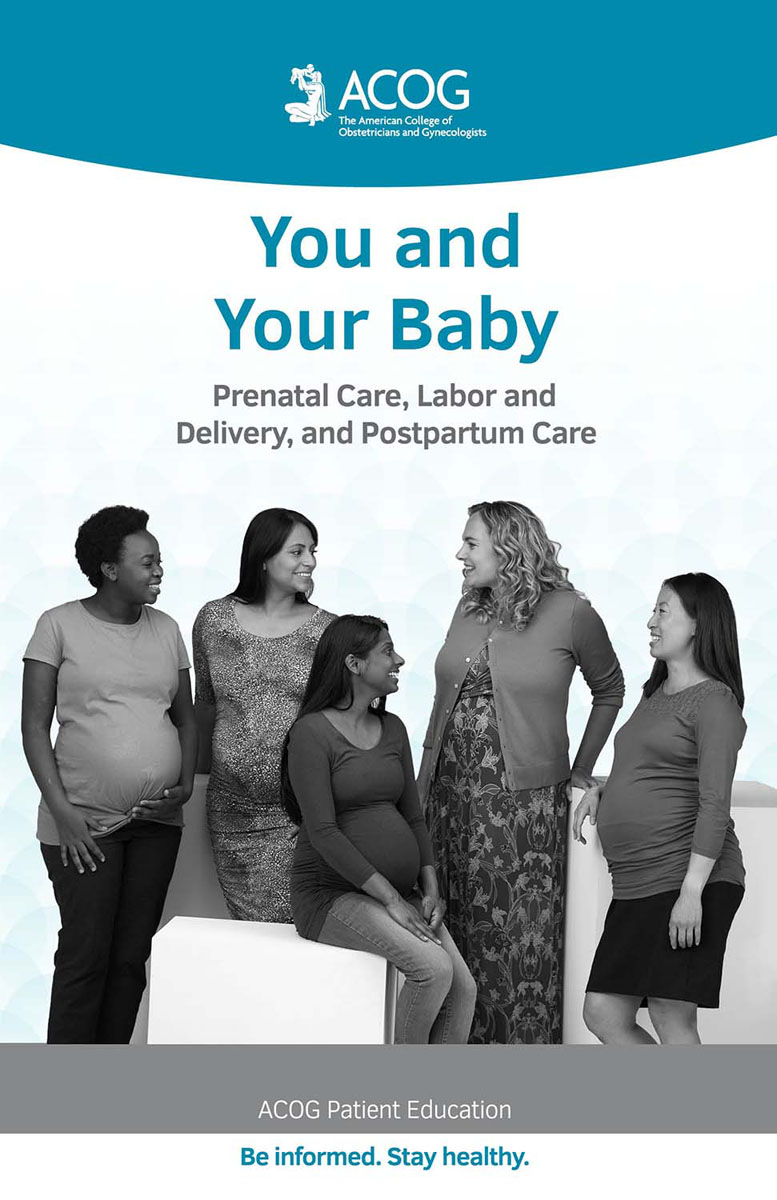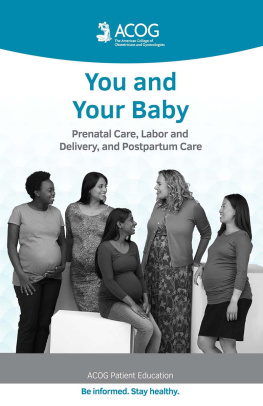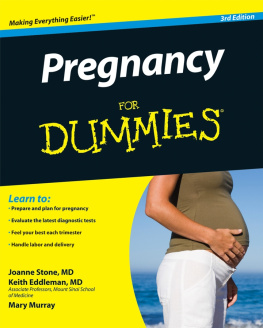
Copyright Notice
Thank you for your purchase of an ACOG electronic booklet. Your purchase creates a license from ACOG to you. This license is limited and not exclusive. You cannot transfer this license to anyone else. This license can be revoked if ACOG chooses.
What you can do with this booklet
- Keep one electronic copy on your computer, phone, or tablet, or in cloud storage (Google Drive, Dropbox, etc.).
- Print one entire copy for your own use or to share with a friend or family member.
- Copy a few pages now and then to give to friends or family.
What you cant do with this booklet
- Email an electronic copy of the entire booklet to anyone.
- Make multiple whole copies to share with others.
- Post the entire booklet on a website, on a blog, etc.
- Routinely copy pages and give to other people.
- Republish the entire booklet in its original form or in a new format.
This is EB005 in ACOGs Patient Education Booklet Series.
This information is designed as an educational aid for the public. It offers current information and opinions related to womens health. It is not intended as a statement of the standard of care. It does not explain all of the proper treatments or methods of care. It is not a substitute for the advice of a physician. For ACOGs complete disclaimer, visit www.acog.org/WomensHealth-Disclaimer .
Copyright May 2021 by the American College of Obstetricians and Gynecologists. All rights reserved.
ISBN: 978-1-948258-53-1
American College of Obstetricians and Gynecologists
409 12th Street SW
Washington, DC 20024-2188
You and Your Baby
Prenatal Care, Labor and Delivery, and Postpartum Care
right away. You also may need to make lifestyle changes that can give your baby a healthy start in life.
Prenatal care includes regular health care visits and childbirth education. Prenatal visits allow your ob-gyn to monitor your health as well as that of your fetus. You can discuss any questions or concerns you may have and learn more about your pregnancy. You will have regular appointments throughout your pregnancy.
Your first or second prenatal care visit will probably be one of your longest visits. Your ob-gyn will need to ask a lot of questions about your health and do several tests. Its important to answer all questions honestly and with as much detail as you can. During these early visits, your ob-gyn may
- ask about your health history, including past pregnancies, surgeries, or medical problems
- ask about any prescription and over-the-counter medications youre taking (bring them with you, if possible)
- ask about the health history of your family and the babys father
- do a complete physical exam with blood and urine tests
- do a
- measure your blood pressure, height, and weight
- calculate the babys
Telehealth and Your Ob-Gyn Visits
In recent years, telehealth has become more available as a form of health care. During the coronavirus (COVID-19) health crisis, telehealth has been a safe way for people to get health care without going to an office. But telehealth also is a good choice for people who need to travel long distances to see a doctor. In some cases, telehealth can be used to reduce the number of in-person visits needed during pregnancy. But keep in mind that if your ob-gyn thinks it would be better for you to be seen in person, you may be asked to schedule an office visit.
To visit with your ob-gyn using telehealth, you need a phone, computer, or tablet. If your visit is just by phone, you and your doctor will speak on the phone like any typical phone call. If your visit is through a video connection, your ob-gyns office will give you instructions for how to download and use a video app on your smartphone, computer, or tablet. With a video connection you and your ob-gyn will see each other on screen.
Your Estimated Due Date
Because most women know when their occurred, and because babies typically are born 40 weeks later, ob-gyns usually count pregnancy from the first day of your LMP. The day your baby is due is called the EDD.
Your EDD can be calculated by counting 280 days from the first day of your LMP. In some cases, there are better ways of estimating your due date than using your LMP. Your ob-gyn may use an to calculate your EDD if
- you are not sure of the first day of your LMP
- your periods are not regular
- you were using hormonal birth control when you got pregnant
- your are very short or very long
Estimating Your Due Date
- Take the date that your last normal menstrual period started.
- Add 7 days.
- Count back 3 months.
Example: The first day of your last menstrual period was January 1. Add 7 days to get January 8. Then count back 3 months. Your estimated due date is October 8.
Your ob-gyn will use your EDD to calculate the fetuss . Gestational age is measured in weeks, months, and trimesters. Ob-gyns also divide the weeks of pregnancy into days. For example, 24 and 3/7 weeks means 24 completed weeks plus 3 days of pregnancy. Heres how the trimesters are defined:
- First trimester (first day of LMP to 13 weeks and 6 days): The time when and major organ development occurs.
- Second trimester (14 weeks and 0 days to 27 weeks and 6 days): The time of rapid growth and development. There is some chance of survival if the fetus is born in the later weeks of the second trimester.
- Third trimester (28 weeks and 0 days to 40 weeks and 6 days): The time when the fetuss weight increases and the organs mature so they will be ready to function after birth.
Childbirth Preparation
Childbirth preparation helps you cope with the pain of labor and delivery. Childbirth preparation classes are available that teach various techniques. Although specific techniques vary, these childbirth preparation methods seek to relieve discomfort through the general principles of education, support, relaxation, paced breathing, and touch.
You dont have to select a particular childbirth method. Its not a requirement for giving birth. Your nurses and ob-gyn will give you the instructions and information you need while youre at the hospital or birth center. If you do opt to go to childbirth preparation classes, you and your labor partner should practice the exercises you learn so that you can more easily remember them when you are in labor.
Birth Plan
A birth plan is a written outline of what you would like to happen during labor and delivery. A birth plan might include
- the setting you want to deliver in
- the people you want to have with you
- whether you plan to use pain medications
A birth plan lets everyone taking care of you know your wishes for your labor and delivery. Go over your plan with your ob-gyn well before your due date. He or she can explain how your plan fits with his or her policies and the hospitals resources and policies. Not every hospital or birth center can accommodate every request. Still, a plan can help you make your wishes clear. Discussion about your expectations up front can help reduce surprises and disappointments later.
When writing your birth plan, think about how you would like labor and delivery to proceed. What things do you want during labor and delivery? What would enhance the experience for you? What would make you more comfortable? Here are some extra pointers for your birth plan:










